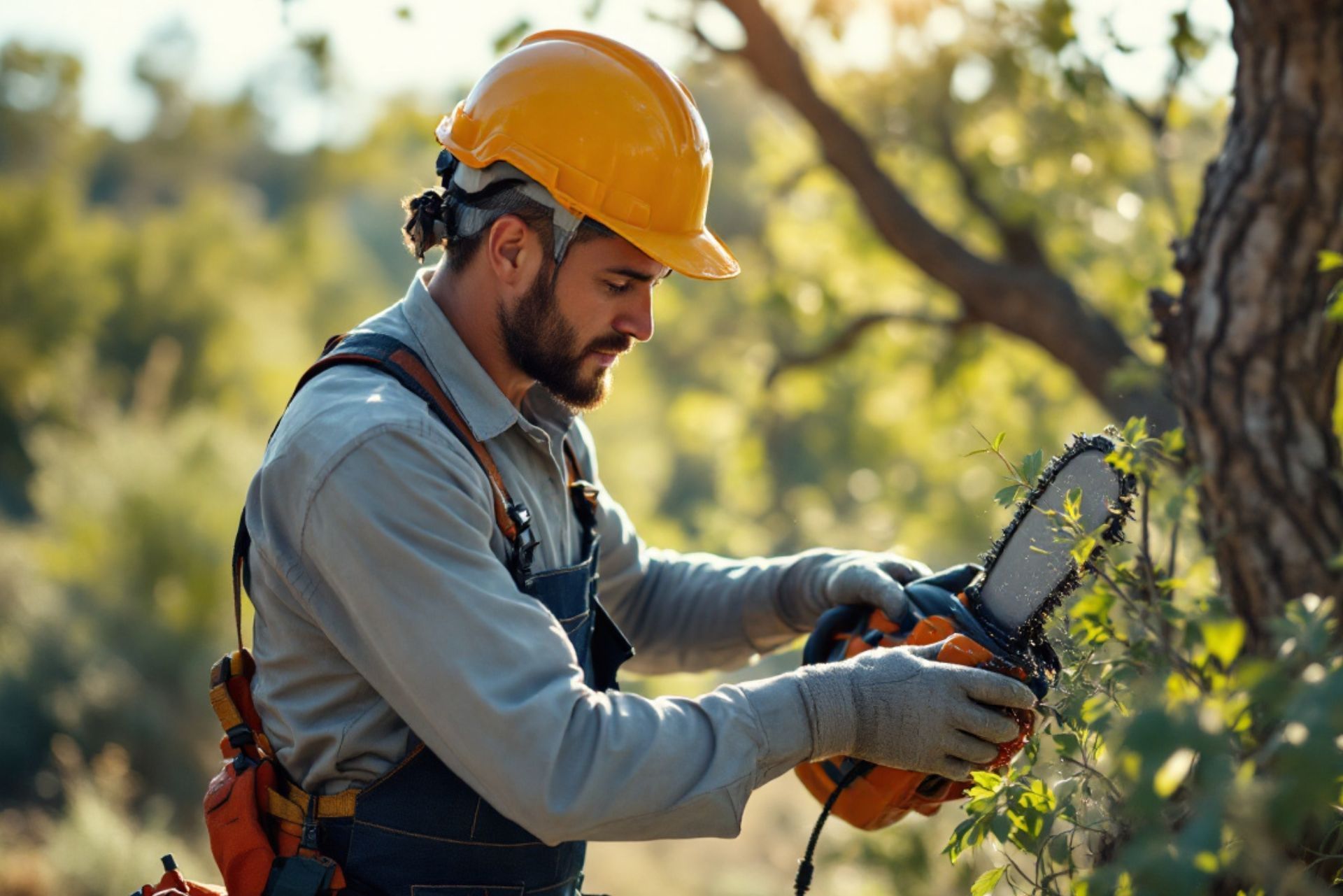Top 3 Recommended Policies
Index
Contact Us
Phone
Location
Tree trimming is a vital service that enhances the aesthetics and health of trees. However, it also comes with specific risks and challenges that necessitate adequate protection through insurance. In Arizona, tree trimmers face unique regulations and circumstances, making it crucial for business owners to understand the details of tree trimmer insurance. This article aims to provide comprehensive insights into tree trimmer insurance in Arizona, covering its importance, features, costs, claims process, legal requirements, and frequently asked questions.
Understanding the Basics of Tree Trimmer Insurance
What is Tree Trimmer Insurance?
Tree trimmer insurance, also known as arborist insurance, is a specialized form of coverage tailored to the unique risks encountered by tree trimming professionals. This insurance typically includes general liability coverage, which protects against claims of bodily injury or property damage that may occur while performing services. For instance, if a tree trimmer accidentally damages a customer's fence while removing a tree, general liability insurance can help cover the costs of repairs, preventing significant financial loss for the business.
In addition to general liability, tree trimmer insurance can encompass other types of coverage, such as workers' compensation and equipment insurance. Workers' compensation is particularly vital, as it provides coverage for medical expenses and lost wages if an employee is injured on the job. Equipment insurance, on the other hand, protects against theft or damage to essential tools and machinery, which are often substantial investments for tree trimming companies. Each policy is designed to provide financial protection against lawsuits, accidents, and unforeseen events that could negatively affect business operations.
Why is Tree Trimmer Insurance Necessary?
Safeguarding one’s business and personal assets is a primary reason for obtaining tree trimmer insurance. The tree trimming profession involves the use of heavy equipment and work at height, which increases the risk of accidents. For example, a falling branch could injure a bystander or damage a nearby vehicle, leading to costly legal claims. Without adequate insurance, tree trimmers could face substantial financial liabilities that could jeopardize their business's future.
Furthermore, clients often require proof of insurance before allowing professionals to perform work on their properties. Having the right insurance demonstrates professionalism and instills trust, potentially leading to more business opportunities. Many homeowners and commercial property managers prioritize hiring insured contractors, as this reduces their own risk exposure. Additionally, tree trimmers with comprehensive insurance can differentiate themselves in a competitive market, showcasing their commitment to safety and responsibility, which can be a significant selling point when bidding for jobs.

Key Features of Arizona Tree Trimmer Insurance
Coverage Details
Arizona tree trimmer insurance encompasses various types of coverage suited to different needs. Key components include:
- General Liability: Covers third-party bodily injury and property damage. It is essential for protection against lawsuits arising from accidents.
- Workers' Compensation: Offers medical and wage benefits to employees who are injured while on the job.
- Equipment Insurance: Protects against the loss or damage of tools and equipment used in tree trimming operations.
- Commercial Auto Insurance: Covers vehicles used for business purposes, protecting against accidents and damages while on the road.
Policy Limitations
While tree trimmer insurance provides essential coverage, it is important to understand its limitations. Policies may exclude certain activities, such as work on non-trees, and have specific conditions that must be met for claims to be valid.
Additionally, there might be caps on the amounts covered for each type of claim. Different insurance providers may offer varying terms, emphasizing the need to read and understand every policy thoroughly before purchasing.
Furthermore, some policies may not cover damages caused by natural disasters, such as floods or earthquakes, which can be particularly relevant in Arizona's diverse climate. It's also worth noting that coverage for subcontractors may differ, so tree trimmers who hire additional help should inquire about how their policy addresses this aspect. Understanding these nuances can help business owners avoid unexpected out-of-pocket expenses and ensure they have adequate protection for all aspects of their operations.
Another critical factor to consider is the importance of maintaining safety protocols and training for employees. Many insurance providers may offer discounts or lower premiums for companies that can demonstrate a commitment to safety through regular training sessions and adherence to industry standards. This not only helps in reducing the risk of accidents but also fosters a culture of safety within the organization, ultimately benefiting both the employees and the business as a whole.
Cost of Tree Trimmer Insurance in Arizona
Factors Influencing the Insurance Cost
The cost of tree trimmer insurance in Arizona can vary significantly based on several factors. These include:
- Business Size: Larger operations with more employees or higher revenue may face higher premiums.
- Claims History: A history of claims can increase insurance costs, as it suggests higher risk.
- Coverage Types: The breadth of coverage chosen will also affect the premium; more extensive coverage generally translates to higher costs.
- Location: Risk factors associated with specific locations, such as weather conditions or crime rates, can influence pricing.
Ways to Lower Your Insurance Premium
Finding ways to reduce insurance premiums is beneficial for tree trimming businesses looking to save costs. Consider the following strategies:
- Improve Safety Measures: Implementing a robust safety program can decrease risks and may lower insurance costs.
- Bundle Policies: Purchasing multiple types of insurance from the same provider may result in discounts.
- Increase Deductibles: Opting for a higher deductible can lower the premium, although this means increased out-of-pocket costs during a claim.
Maintain a Clean Safety Record: Displaying a history of few or no accidents can result in lower premiums.
Additionally, businesses should consider investing in employee training programs that focus on safety and risk management. By ensuring that all workers are well-trained in the latest safety protocols and equipment handling, companies can not only enhance their operational efficiency but also demonstrate to insurers their commitment to minimizing risks. This proactive approach can lead to more favorable insurance terms and potentially lower premiums over time.
Moreover, staying informed about industry trends and changes in regulations can also play a crucial role in managing insurance costs. For instance, understanding how seasonal weather patterns in Arizona might affect tree trimming operations can help businesses prepare and mitigate risks. By adapting to these changes, companies can position themselves as lower-risk clients in the eyes of insurers, further contributing to reduced insurance expenses.
How to Choose the Right Tree Trimmer Insurance in Arizona
Evaluating Your Business Needs
Choosing the right tree trimmer insurance starts with evaluating specific business needs. Consider the size of your operation, the number of employees, and the types of services offered. Accurately assessing risk levels allows for the selection of appropriate coverage types.
Additionally, consider the scope of work you undertake. If your business includes hazardous tree removal or onto residential properties, you may require more comprehensive coverage than a business focused on general trimming. It's also important to factor in the equipment you use, as specialized machinery may necessitate additional coverage. For instance, if you operate bucket trucks or chippers, ensure that your policy covers potential damages or accidents involving these tools, as they can be significant sources of risk.
Comparing Different Insurance Providers
Once your needs are established, it is crucial to compare different insurance providers. Look for companies that specialize in arborist or tree care insurance, as they will better understand your unique needs.
Obtaining quotes from multiple providers gives insight into options available and allows for informed decisions. Take note of customer service records, claims processing speed, and the reputation of each provider before making a commitment. Additionally, consider seeking referrals from other tree care professionals or industry associations, as they can provide firsthand experiences with various insurers. This peer feedback can be invaluable in identifying which companies offer not only competitive rates but also reliable support during the claims process, ensuring that you can focus on your work without the added stress of insurance issues.
Claim Process for Tree Trimmer Insurance
When to File a Claim
Filing a claim should be considered when an incident occurs that may lead to financial liability or loss. Instances such as employee injuries, damage to a client's property, or theft of equipment warrant immediate claims filing. It's important to recognize that not all incidents will require a claim; minor accidents might be better handled out-of-pocket, depending on the deductible and potential impact on future premiums.
Timeliness is key in the claims process; many insurers require claims to be reported within a specific timeframe. Documenting incidents thoroughly and promptly can help facilitate a smoother process. Additionally, keeping a detailed log of events leading up to the incident can be beneficial. This log should include dates, times, locations, and the names of any individuals involved, as this information can provide context and clarity when discussing the claim with your insurer.
Steps in the Claim Process
The claim process generally involves several critical steps:
- Report the Incident: Reach out to your insurance provider to notify them of the incident. Be prepared to provide a concise overview of what happened and the immediate actions taken.
- Complete Necessary Forms: Fill out any required claim forms, providing detailed information. This may include specifics about the incident, the parties involved, and any immediate costs incurred as a result of the event.
- Gather Evidence: Collect evidence such as photographs, witness statements, and police reports if applicable. This evidence not only supports your claim but also helps to establish the circumstances surrounding the incident, which can be critical for the adjuster's assessment.
- Follow Up: Maintain communication with the insurance adjuster throughout the review process. Regular follow-ups can help ensure that your claim is being processed in a timely manner and can also provide you with updates on any additional information that may be required.
Throughout the claims process, it's crucial to remain organized and proactive. Keeping all documentation related to the claim in one place can save time and reduce stress. This includes copies of all correspondence with your insurance company, receipts for any expenses incurred due to the incident, and any notes from conversations with adjusters or other involved parties. Being prepared can make a significant difference in how quickly and efficiently your claim is resolved.
Moreover, understanding your policy's coverage limits and exclusions can help set realistic expectations about the outcome of your claim. Familiarizing yourself with the specifics of your tree trimmer insurance policy can empower you to advocate for yourself effectively during the claims process. If you encounter any challenges, consider consulting with a professional insurance advisor who can provide guidance tailored to your situation.

Legal Requirements for Tree Trimmer Insurance in Arizona
State Regulations for Tree Trimmer Insurance
In Arizona, there are specific legal requirements for businesses that offer tree trimming services. While tree trimmer insurance is not always mandated by law, having general liability insurance is recommended to protect against potential lawsuits. This type of insurance typically covers bodily injury, property damage, and personal injury claims, which can arise from accidents that occur during tree trimming operations. For example, if a tree trimmer accidentally damages a client's property while performing their job, general liability insurance can help cover the costs associated with repairs or legal fees.
Additionally, businesses with employees are required to carry workers' compensation insurance to comply with state regulations. This insurance is crucial in providing medical benefits and wage replacement to employees who are injured on the job, ensuring that they receive the necessary care without financial burden. Understanding and adhering to these regulations is critical for operating legally and responsibly, as it not only protects the business owner but also fosters a safe working environment for employees.
Penalties for Non-Compliance
Failure to comply with insurance requirements can lead to significant penalties, including fines or loss of business licenses. The Arizona Department of Insurance actively monitors compliance, and businesses found lacking may face audits and investigations that can disrupt operations. Moreover, being uninsured may result in paying out-of-pocket for damages or injuries that occur during operation. This can be financially devastating, especially for small businesses that may not have the resources to cover unexpected costs.
Thus, it's essential for tree trimmers in Arizona to ensure that they meet all insurance requirements, protecting themselves and their businesses from potential legal and financial repercussions. Additionally, maintaining proper insurance can enhance a company's reputation, as clients often prefer to hire insured professionals who demonstrate a commitment to safety and responsibility. By investing in the right insurance coverage, tree trimmers not only comply with legal standards but also build trust with their clientele, ultimately contributing to the long-term success of their business.
Frequently Asked Questions About Tree Trimmer Insurance
What Does Tree Trimmer Insurance Cover?
Tree trimmer insurance typically covers general liability, workers' compensation, and equipment protection. However, coverage can vary widely among policies, so it is essential to read the fine print and understand what is specifically included and excluded in each policy. For instance, general liability insurance protects against claims of bodily injury or property damage that may occur during the course of work. This can include accidents where a branch falls and damages a car or injures a passerby. Additionally, equipment protection is crucial, as tree trimming often involves expensive tools and machinery that can be subject to theft or damage.
Moreover, some policies may offer additional coverage options such as professional liability insurance, which can safeguard against claims of negligence or failure to perform services as promised. This is particularly important in a field where precision and expertise are paramount. By opting for comprehensive coverage, tree trimmers can ensure they are prepared for a variety of potential risks, thus allowing them to focus on their work without the constant worry of financial repercussions from unforeseen incidents.
Is Tree Trimmer Insurance Mandatory in Arizona?
While tree trimmer insurance is not universally mandatory in Arizona, specific components such as worker's compensation insurance are required for businesses with employees. That said, it is strongly recommended that all tree trimmers obtain some form of insurance to mitigate risks associated with their work. The nature of tree trimming involves inherent dangers, such as working at heights and handling heavy equipment, which can lead to serious accidents. Without adequate insurance, tree trimmers may face significant financial burdens in the event of an injury or damage claim.
Additionally, many clients may require proof of insurance before hiring a tree trimming service. This not only protects the client but also enhances the credibility of the business. Having the right insurance can be a deciding factor for potential customers who want to ensure that they are working with a professional who takes safety and liability seriously. In a competitive market, being able to demonstrate proper insurance coverage can provide a significant advantage, helping to build trust and secure more contracts.
In conclusion, understanding Arizona tree trimmer insurance is essential for professionals in the industry. By being well-informed about coverage options, costs, and legal obligations, tree trimmers can better protect themselves against the inherent risks of the job and ensure sustainable business growth.

